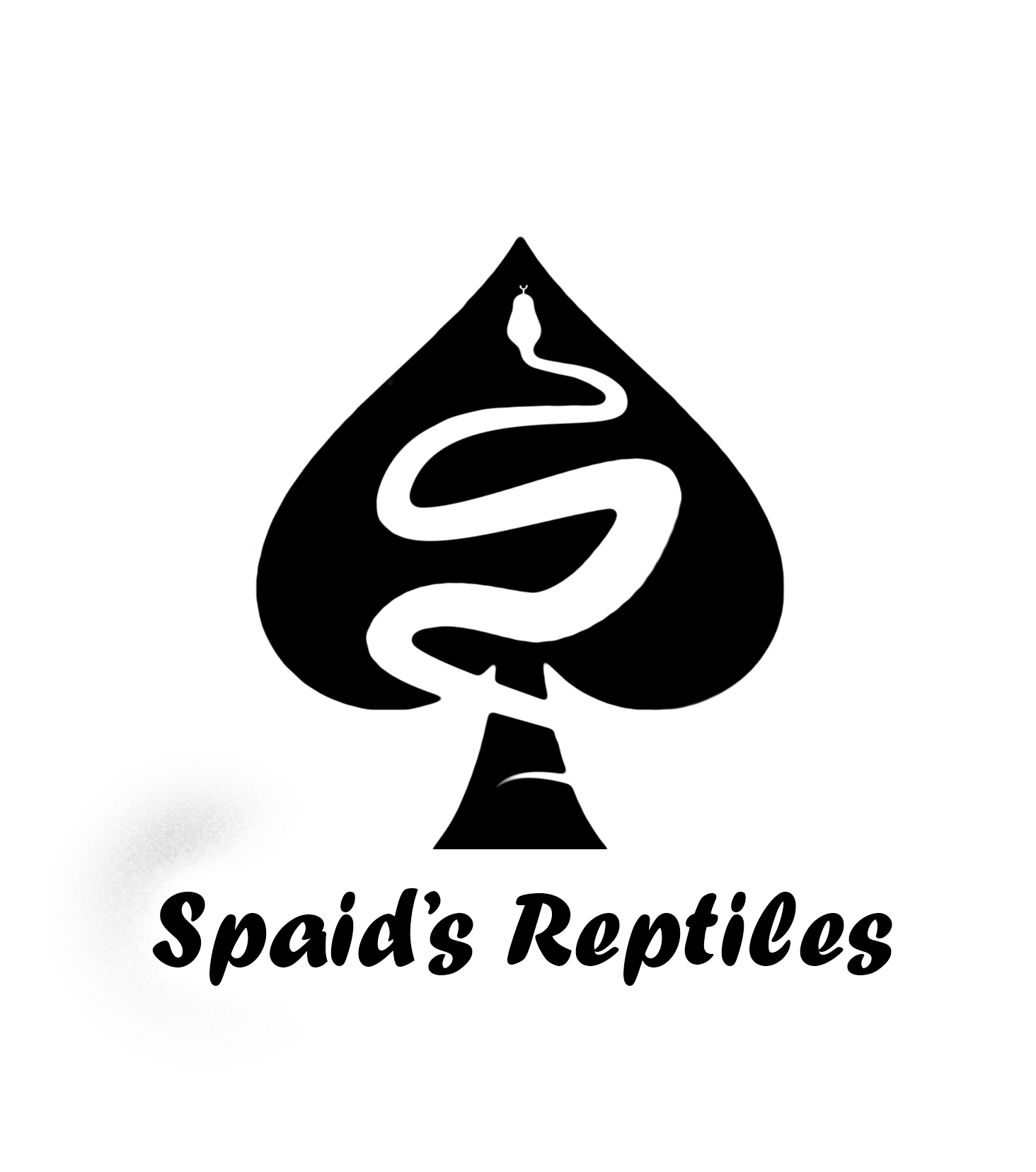Ball Python Care Sheet
This is a care sheet we have been putting together after years of working with Ball Pythons. One of the most important things to keep in mind is that each animal is different, and some things that work well for some may not be best for others. With that in mind this care sheet is designed as a guideline for the majority of ball pythons and should be the starting point for all newly acquired animals.
This care sheet is designed to cover the care of a ball python in an Aquarium display setup. When designing an aquarium, some areas of personal preference is suitable, however some areas of the setup are not and the purpose of this sheet is to cover the essentials for the animal to thrive.
Required:
Hot side of 85-90 F
Cold side minimum of 75 F
Multiple Hide boxes, preferably on both ends of the enclosure.
Water bowl with fresh water at all times
Substrate (No Pine or Sand as it will not hold moisture. No Cedar bedding as it is toxic to all snakes)
Repti Chip is the preferred bedding at Spaid’s Reptiles, however Cyprus, Aspen and other Coconut based beddings are recommended as well.
Cage Configuration:
For young ball pythons, a smaller aquarium around 10 gal is preferred as the animals feel more secure in smaller surroundings. There is no maximum size enclosure for a ball pythons, however we have found that they prefer to be in smaller enclosures as they live in burrows and tight spaces in the wild. As long as the animal is able to move off of the heat source of the enclosure, to be able to regulate their temperature, the enclosure is big enough.
Ball pythons require a hot side between 85 and 90 degrees (Fahrenheit), and a cold side no lower than 75. Since ball pythons are nocturnal, and do not tend to bask unless they need to, we recommend using a heat pad under the aquarium on one side. Avoid using heat rocks or other ceramic heating elements inside the aquarium as it can burn the animal. If the hot side (on the bedding) is still under 85, add a daytime heat lamp on the same side of the enclosure. The cold side of the enclosure should stay above 75 with the other heat elements present. This allows the animal to move to where they need to be to regulate their body temperature.
Add at least 1 hide box (this can be decorative) on each side of the enclosure, larger enclosures may need additional hide boxes so the animal can still thermal-regulate between the hot and cold side and feel secure in a hide box. Ball pythons generally live in burrows and rodent holes in the wild and do not like to be out in the open. Feeding issues in ball pythons occur most often when they are unable to feel secure in a tight space. Also other decor is good to give them places to feel secure but not necessarily be hidden.
Feeding
Ball pythons are known in the reptile industry for their finicky feeding response. Most of the questions we get from customers is about feeding because of this. Below are a few first steps and guidelines we have found effective in getting ball pythons to start eating after recent arrival to a new home. Please keep in mind that there is no guarantee these steps will make the animal eat, this is simply our suggested starting point.
Additionally, even though these are suggestions for animals that have eaten in the past, but have been refusing meals, we do suggest that first time owners follow these suggestions from the very start of receiving a new animal, regardless of the animal refusing meals.
Feed the animal in its normal enclosure
A ball python that has stopped eating needs to have a little stress as possible, the focus of getting them to eat is to make them feel as secure and relaxed as possible. Moving them to a different enclosure (normally completely different from their normal habitat, cold and without decor/hiding spaces) will only make them more stressed.
Confirm temperatures are hot enough
Feed at night, offer live rodents and leave the room for 30 minutes to an hour with the rodent.
Ball python’s primary feeding time is at night, leaving the room in the dark will avoid any distractions for the animal as well. Live feed is the most natural for the snake, although most will switch to frozen/thawed, and have eaten them in the past, when an animal has gone off feed bringing them back to their instincts can be helpful
Once the animal has started eating try offering frozen/thawed around the same time. Once they are in a routine of eating, it is easier to switch them to frozen/thawed.
If possible bring the rodent(s) into the room near their enclosure for 30 minutes to an hour before feeding, this will help prepare them for feeding.
Problem feeder suggestions
When a ball python stops eating (after following the steps above), here are a couple additional suggestions:
Give them a break from handling until they start eating
Move the enclosure to a room with less “human traffic”
Increase hot side temperature, sometimes being at 85 is not enough.
Wait a week between feedings, offering food every day or 2 will cause them more stress
Clean or switch to different substrate
Reach out to the breeder you purchased the animal from and see if they have environment suggestions (heat, humidity, enclosure size, previous diet etc)
For more information on Ball Python feeding, please refer to Justin Koblyka’s article:
The Psychology of Problem Feeders – Get your Ball Python eating again

